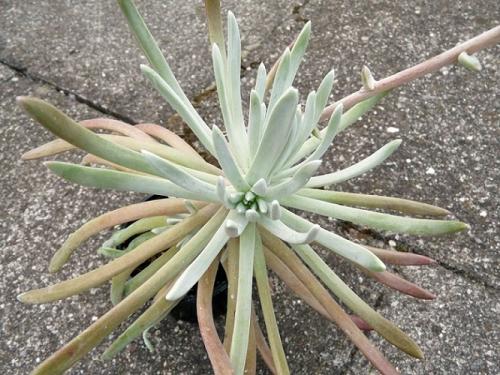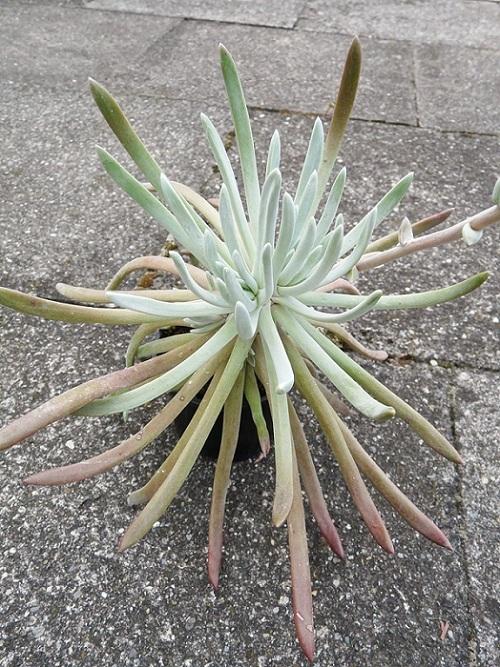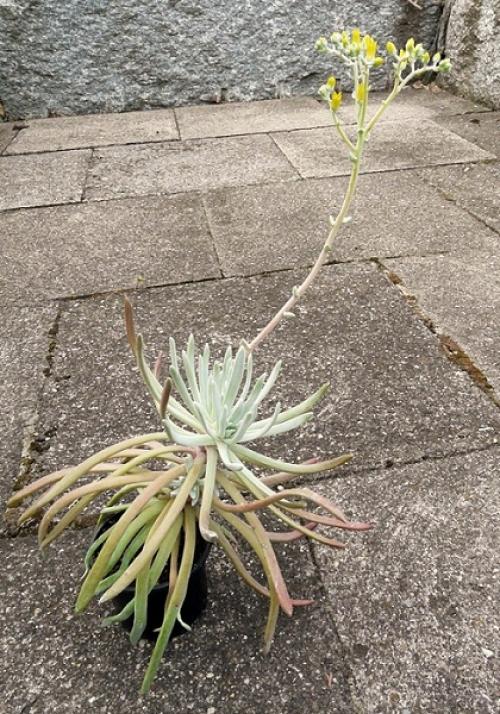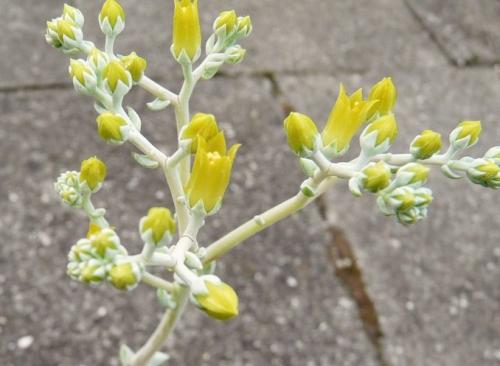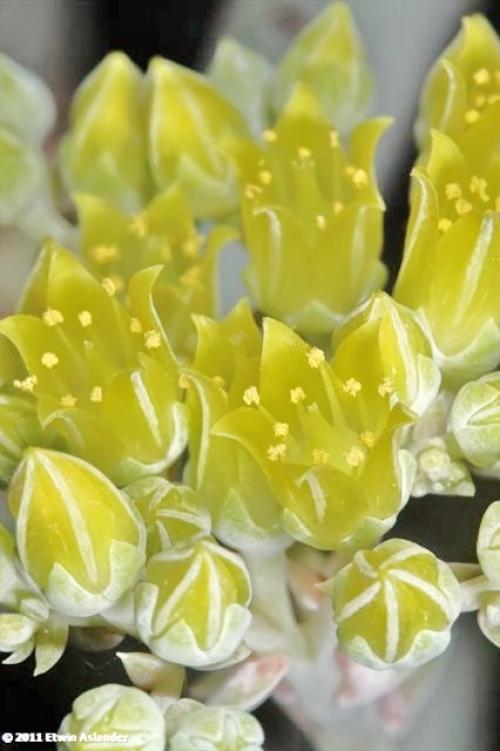CAESPITOSA (Haworth) Britton & Rose, 1903
Synonyms :
Cotyledon caespitosa Haworth (1803) / Echeveria caespitosa (Haworth) DC (1828)
Cotyledon linguiformis W.T.Aiton (1811)
Sedum cotyledon Jacquin (1811) / Dudleya cotyledon (Jacquin) Britton & Rose (1903) / Echeveria cotyledon (Jacquin) Nelson & Macbride (1913)
Cotyledon reflexa Willdenow (1814) / Echeveria reflexa (Willdenow) A.Berger (1930)
Echeveria laxa Lindley (1849) / Cotyledon laxa (Lindley) Brewer & S.Watson (1876) / Dudleya laxa (Lindley) Britton & Rose (1903)
Cotyledon californica Baker (1869)
Echeveria californica hort. ex Baker (1869)
Cotyledon lingula S.Watson (1879) / Dudleya lingula (S.Watson) Britton & Rose (1903) / Echeveria lingula (S.Watson) Nelson & Macbride (1913)
Dudleya helleri Rose (1903) / Cotyledon helleri (Rose) Fedde (1904) / Echeveria helleri (Rose) A.Berger (1930)
Subgenus Dudleya
Distribution : USA (California : C and S coast, N Channel Islands); coasts to 100 m.
Description (according to J. Thiede in IHSP, 2003) :
Stems short or > 30 x (0.2-) 1.5 – 4 cm.
Rosettes 5 – 20 (-30) cm in diameter, with 15 – 30 (-50) leaves, in small lax or cushion-shaped groups. These sometimes to 60 cm in diameter and with > 150 rosettes.
Leaves usually oblong to oblong-oblanceolate, occasionally somewhat terete, acute to slightly acuminate, 5 – 20 x (0.5-) 1 – 2 (-5) (basally 1 – 4) cm, green or glaucous.
Inflorescences : Scape 1 – 4 (-6.5) cm, inflorescence usually obpyramidal, with 3 – 5 not or up to 2x branched scorpioid branches, these 3 – 15 cm, with 3 – 15 flowers, pedicels 1 – 6 (-11) mm.
Flowers : Calyx 4 – 6 mm, lobes triangular-ovate, acute, 2 – 5 mm, petals elliptic, 8 – 16 x 2.5 – 5 mm, bright yellow, rarely red or orange, tube 1.5 – 2.5 mm, lobes erect, sometimes spreading at 45°, acute.
Cytology : n = 17, ± 34, 51, 68, ± 85, ± 119
A variable ill-delimited and difficult complex with intermediates towards D. cymosa, D. farinosa, D. lanceolata and D. palmeri (Bartel 1993). When D. palmeri and D. verityi are segregated from D. caespitosa, the remaining difference to the variable D. greenei is esp. the bright yellow flower colour (pale yellow in D. greenei) according to McCabe (1997), but the existence of plants of D. greenei with rather bright yellow petals further blurs the distinction.
In habitat in Lucia, CA, USA :
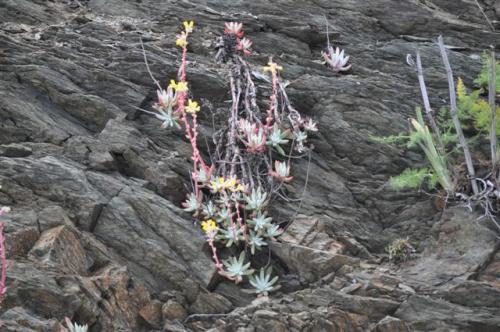
Near Marina, CA, California :
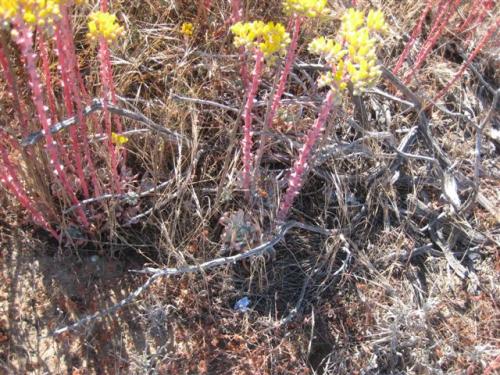
Near Rocky Creek Bridge, CA, USA :
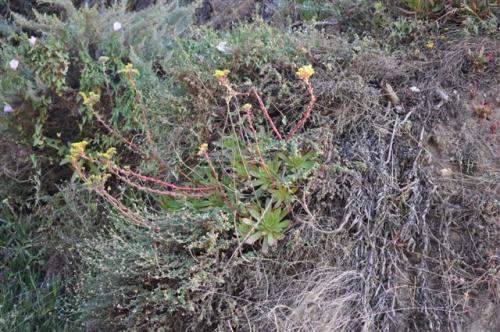
Near Rocky Point, CA, USA :
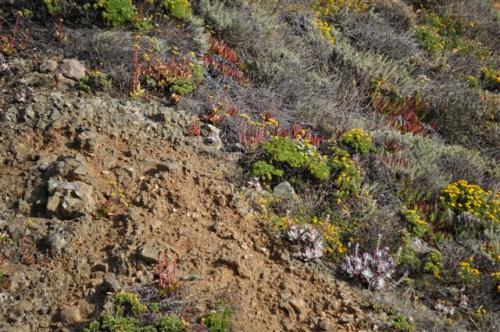
At Willow Creek, CA, USA :
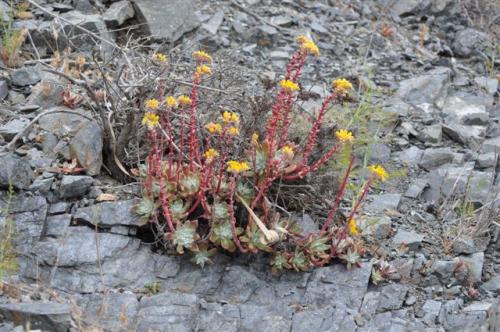
Photos Michael Wisnev
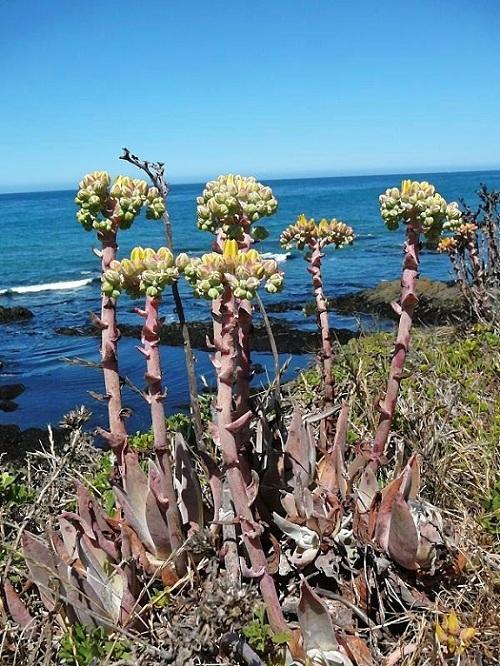
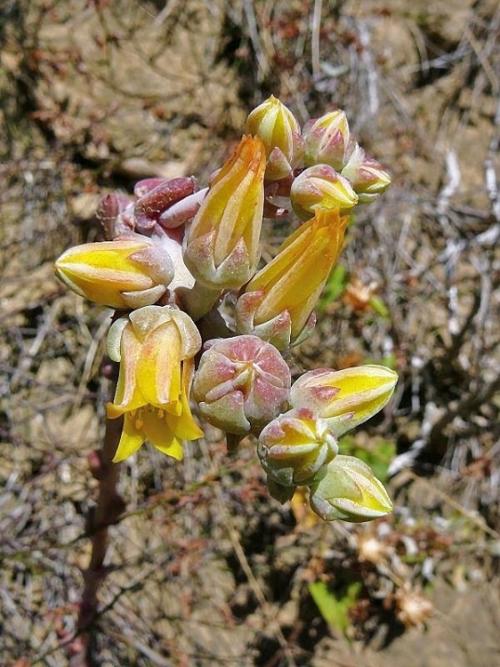
Photos Steve Mudge
At Huntington Botanical Gardens, CA, USA :
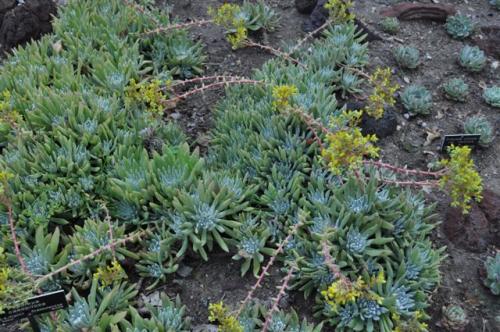
At Santa Barbara Botanical Garden, CA, USA :
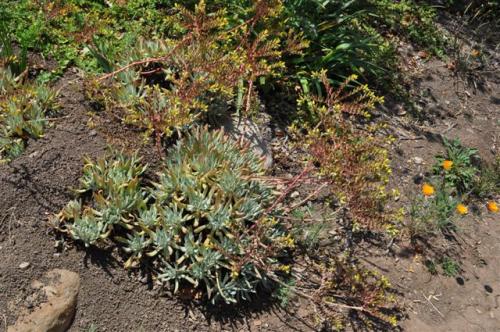
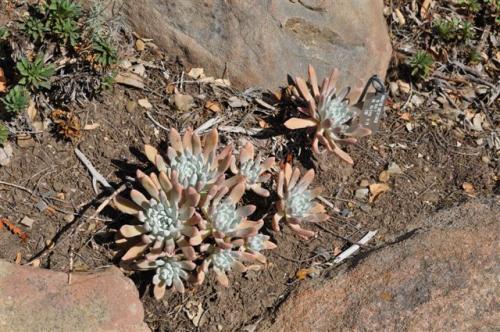
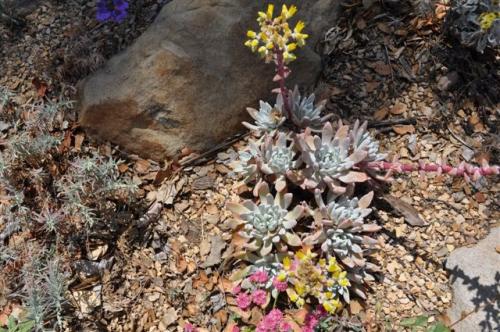
Photos Michael Wisnev
Dudleya ceaspitosa 'Lucia Form' :
